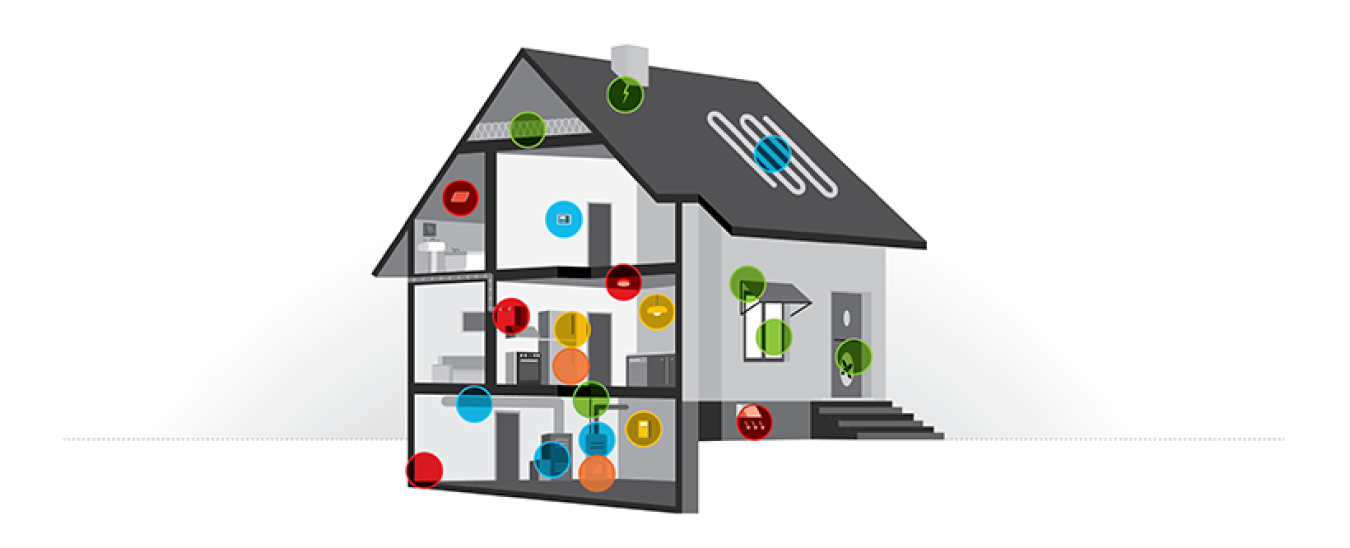The U.S. Department of Energy's (DOE) Weatherization Assistance Program (WAP) differs in many ways from what is commonly referred to as "weatherizing your home." The latter involves low-cost improvements, such as adding weatherstripping to doors and windows, to save energy. WAP takes the "whole house weatherization” approach that analyzes all of the building systems—the building envelope, heating and cooling systems, electrical system, and electric baseload appliances—through the completion of an energy audit, as shown in Figure 1.

Figure 1: Typical Weatherization Measures

MECHANICAL MEASURES
- Clean, tune, repair, or replace heating and/or cooling systems.
- Install duct and heating pipe insulation.
- Install programmable thermostats and oner SUAC controls.
- Repair replace water heaters.
- Install water heater rank insulation.
- Insulate water heating pipes.
- Install solar water heating systems.
- Install waste heat recovery devices.

HEALTH AND SAFETY MEASURES
- Complete combustion appliance safety testing.
- Repair/replace vent systems to ensure combustion gas draft safely outside.
- Install mechanical ventilation to ensure adequate indoor air quality.
- Assess fire hazards. Install smoke and carbon monoxide alarms when needed.
- Evaluate mold/moisture hazards.
- Perform incidental safety repairs when needed.

BUILDING SHELL MEASURES
- Install wall, floor, ceiling, attic, and/or foundation insulation.
- Complete Blower Door Testing.
- Perform air sealing.
- Repair/replace primary windows/doors.
- Install storm windows/doors.
- Install window film/solar screens/window louvers and awnings.
- Repair minor roof and wall leaks prior to attic or wall insulation.

ELECTRIC BASELOAD MEASURES
- Install motor controls.
- Install efficient light sources.
- Replace refrigerators and freezers with energy efficient models.
Another distinguishing feature of WAP is the attention to the overall health and safety of the clients being served and the weatherization providers. Many dwellings receiving attention are old and in need of repair.
Weatherization providers check the exterior of the building, known as the building envelope, and major energy systems to ensure there are no occupant health or safety concerns before installing any energy efficiency measures.
At its core, WAP is an energy efficiency program. The Program is largely measured in terms of energy saved. WAP recognizes homes and buildings work as a system of interrelated parts and follows the “House as a System” methodology to the assess and treat the homes.
WAP understands it is not effective to insulate an attic if the roof leaks and will degrade the insulation’s performance. Therefore, either the roof is repaired before the insulation is installed or the home is deferred until repairs can be made. When a home is deferred, it does not mean assistance will never be available, but that work must be postponed until the issues can be resolved and the home is ready for weatherization.
To help with moving homes off the deferral waiting list, many WAP local providers combine other federal, state, and local program funding to address the home or building problems so they can be weatherized.



